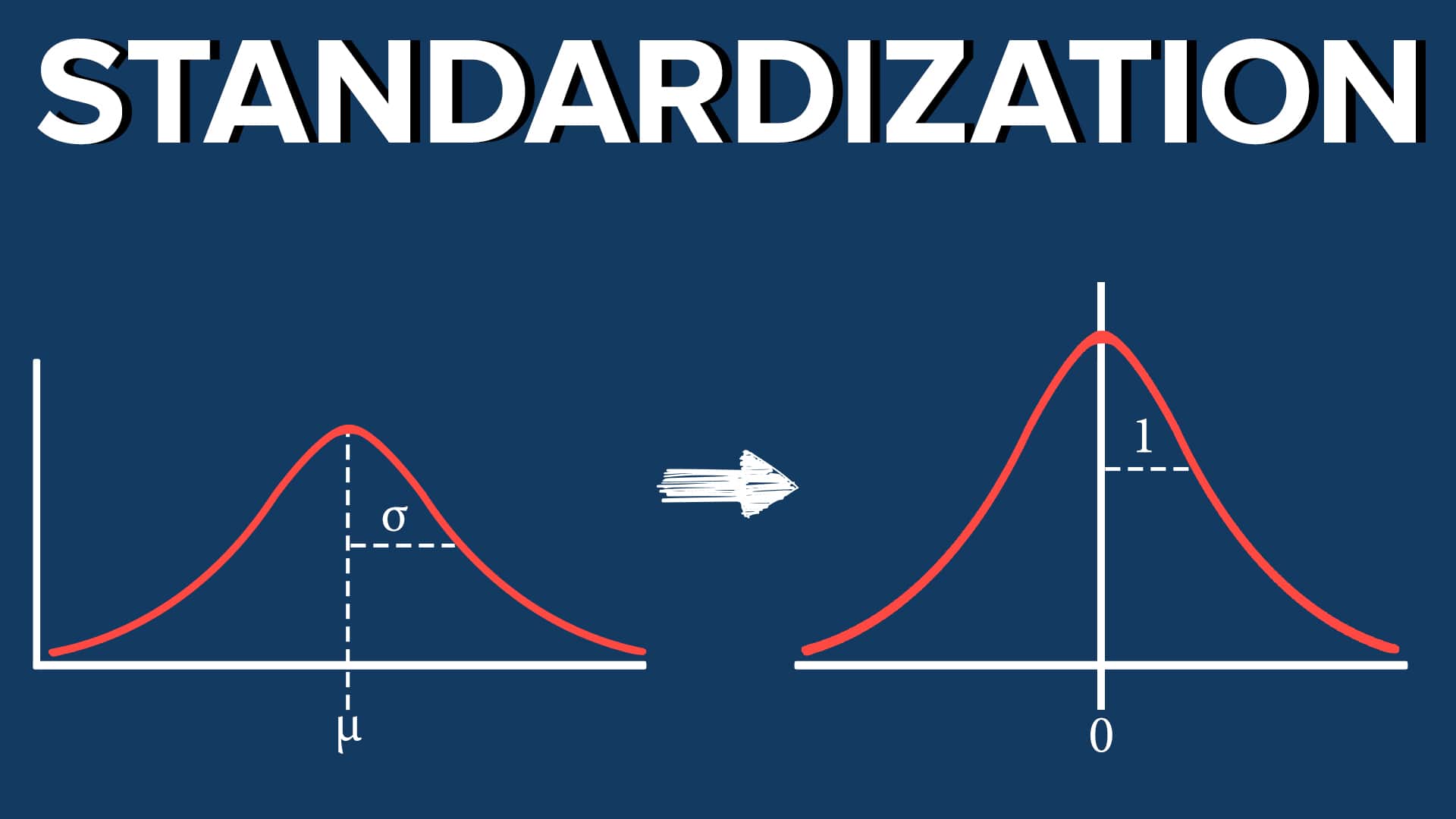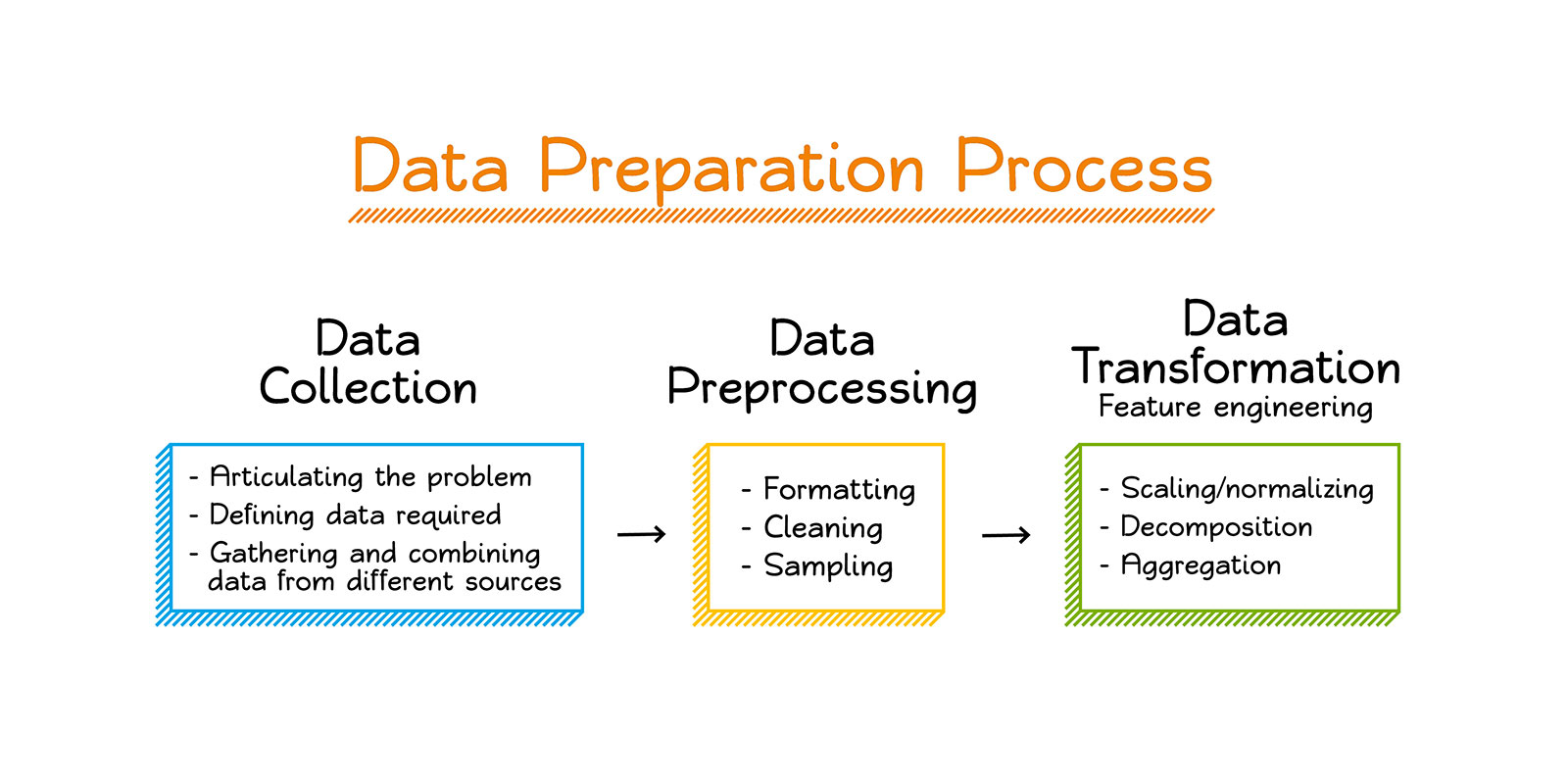Introduction
Data leakage in machine learning refers to a situation where confidential or sensitive information from the training data unintentionally seeps into the model, subsequently jeopardizing its accuracy and integrity. Data leakage can have profound implications for the performance and reliability of machine learning algorithms.
Machine learning models rely on robust and diverse datasets to make accurate predictions and decisions. However, when data leakage occurs, the information used for training and evaluating the model contains unauthorized or irrelevant features or patterns. This compromises the model’s ability to generalize well to unseen data, leading to unreliable outcomes.
Data leakage can occur due to various factors, such as programming errors, data processing flaws, or even malicious intent. It is crucial for organizations and data scientists to be aware of the different types of data leakage and the potential impact it can have on their machine learning projects.
In this article, we will explore and explain the concept of data leakage in machine learning. We will discuss the various types of data leakage, the common causes behind its occurrence, and the significant impact it can have on the accuracy and reliability of machine learning models. Furthermore, we will delve into techniques and strategies to prevent data leakage, ensuring the integrity and effectiveness of machine learning algorithms.
Understanding and addressing data leakage is of utmost importance for organizations that leverage machine learning for critical decision-making processes. By taking proactive measures to prevent data leakage, businesses can enhance the trustworthiness and performance of their machine learning models, ultimately leading to better outcomes and improved operational efficiency.
Understanding Data Leakage in Machine Learning
Data leakage refers to the inadvertent inclusion of information from the test or validation set in the training process of a machine learning model. This can happen when there is accidental exposure of future knowledge or leakage of target variables, leading to artificially high model performance during the training phase.
There are two primary forms of data leakage: target leakage and feature leakage.
- Target Leakage: Target leakage occurs when information from the target variable, which should not be available at the time of prediction, is included in the training dataset. This leads to models that overly rely on features that are not available in real-world scenarios, resulting in unrealistic predictions. For example, if we are predicting customer churn and include the customer’s future churn status as a feature, the model will appear to perform well in training, but fail to handle new data in production as the churn status is not yet known.
- Feature Leakage: Feature leakage occurs when data that would not be available during prediction is present in the training set. This includes variables that are influenced by the target variable or are directly derived from it. For instance, if we are predicting house prices using historical data and include the current sale price of the property as a feature, it will lead to artificially high accuracy since the model is unknowingly using information that would not be available when predicting future house prices.
Data leakage can stem from various sources, such as improper data preprocessing, data collection biases, incorrect feature engineering, or even unintentional human errors. It is critical for data scientists and machine learning practitioners to be diligent in identifying and addressing data leakage, as it can severely impact model performance and undermine the reliability of the predictions.
To mitigate the risk of data leakage, it is essential to establish strong data governance practices. This includes robust data preprocessing and feature engineering pipelines, careful validation strategies, and meticulous feature selection processes. By thoroughly understanding the data and the problem at hand, machine learning practitioners can effectively detect and prevent data leakage, ensuring the accuracy and generalizability of their models.
In the next section, we will explore the common causes of data leakage and delve into some real-world examples to highlight the impact it can have on machine learning projects.
Types of Data Leakage
Data leakage in machine learning can be categorized into several distinct types, each with its own characteristics and implications. Understanding these types is crucial for effectively identifying and addressing data leakage in machine learning projects.
1. Target Leakage
Target leakage occurs when information that is not available during prediction is inadvertently included in the training data. This can lead to models that appear to perform well during training but fail to generalize to new data in deployment. Target leakage can occur when there is a direct or indirect relationship between the features and the target variable, and these features provide future knowledge. It can result in overfitting and inaccurate predictions in real-world scenarios.
2. Feature Leakage
Feature leakage involves including features in the training data that are derived from the target variable or are influenced by it. This type of leakage can artificially inflate the model’s performance metrics during training but render the model useless when making predictions on new data. Feature leakage often occurs due to improper feature engineering, where variables derived from the target variable or those that provide future knowledge are mistakenly included.
3. Temporal Leakage
Temporal leakage occurs when data from the future leaks into the training dataset. This happens when features are constructed using time-related information that would not be available in real-world scenarios. For example, including information about future events or data that occurs after the timestamp being predicted can result in falsely inflated model performance. Temporal leakage is particularly relevant in time series data, where the order of observations is critical.
4. Data Snooping
Data snooping, also known as “peeking at the data,” refers to incorporating knowledge about the test set during the model development process. This can happen when the training data is modified based on insights gained from analyzing the test set, leading to overly optimistic performance measures. Data snooping can introduce an unintended bias into the model and compromise its generalizability.
By understanding the different types of data leakage, machine learning practitioners can exercise caution during the data preparation and modeling stages. This awareness enables them to implement adequate measures to prevent data leakage, ensuring the accuracy, reliability, and fairness of their machine learning models. In the next section, we will explore the common causes of data leakage in machine learning projects.
Common Causes of Data Leakage
Data leakage can occur due to various factors, stemming from both technical and human-related issues. Identifying these common causes is essential for data scientists to mitigate the risk of data leakage and ensure the integrity of their machine learning models.
1. Improper Data Preprocessing
One of the leading causes of data leakage is improper data preprocessing. This includes issues such as incorrect handling of missing values, inappropriate scaling or normalization of features, and leakage through data transformations or encoding. For example, if a feature is transformed using information from the entire dataset, including the test set, it can accidentally introduce leakage and provide a false sense of model performance during training.
2. Leaking Information from Validation or Test Sets
Data leakage can occur when information from the validation or test sets is unintentionally included in the training data. This can happen when there is improper shuffling or splitting of the data, or if the same preprocessing steps are applied to both the training and validation/test sets. Machine learning practitioners must ensure that the training data is completely independent of the validation and test sets to avoid this form of leakage.
3. Inadequate Feature Selection
Inaccurate or inadequate feature selection can lead to data leakage. Including irrelevant or redundant features in the training data can cause the model to overfit, incorporating noise or irrelevant patterns. It is essential to carefully evaluate and select features based on their relevance to the target variable, avoiding any features that may inadvertently leak information or provide future knowledge.
4. Human Error
Human errors, such as accidental inclusion of sensitive information or features that have a direct relationship with the target variable, can introduce data leakage into the training data. It is crucial for data scientists and practitioners to thoroughly review and validate the data before training models and ensure that no unauthorized or irrelevant features are present.
5. Lack of Proper Documentation and Version Control
The lack of proper documentation and version control can also contribute to data leakage. Without clear documentation of data sources, preprocessing steps, and feature engineering processes, it becomes difficult to track and identify potential leaks. Version control enables the team to revert to a previous state and ensure data integrity if unintended changes occur during the model development process.
By being aware of these common causes of data leakage, data scientists and machine learning practitioners can take proactive steps to prevent it. This involves establishing robust data governance practices, conducting thorough data preprocessing, implementing rigorous feature selection techniques, and maintaining proper documentation and version control throughout the machine learning project.
Impact of Data Leakage
Data leakage can have significant consequences on the accuracy, reliability, and fairness of machine learning models. Understanding the impact of data leakage is crucial for organizations and data scientists to recognize the importance of preventing it in their machine learning projects.
1. Inflated Model Performance
Data leakage can lead to artificially high model performance during training, giving the illusion of a well-performing model. This is particularly true when target leakage or feature leakage occurs, where the model incorporates information that would not be available in real-world scenarios. As a result, the model may perform poorly when deployed in production, as it is not able to handle new data effectively.
2. Reduced Generalization
Data leakage can compromise the generalizability of machine learning models. When the model relies on features or information that are not available during prediction, it may fail to make accurate predictions on unseen data. This lack of generalization can lead to unreliable insights and decision-making, undermining the purpose of using machine learning models in the first place.
3. Biased Model Outputs
Data leakage can introduce bias into machine learning models, leading to unfair and discriminatory outcomes. When leakage occurs, the model inadvertently captures spurious correlations or includes features that unintentionally encode information related to protected attributes, such as race or gender. This can result in biased predictions and perpetuate unfair disparities in decision-making processes.
4. Decreased Trust and Confidence
Data leakage can erode trust and confidence in machine learning models. Stakeholders, including users, clients, and regulatory bodies, expect models to be reliable, accurate, and transparent. When data leakage leads to unpredictable or unreliable model behavior, stakeholders may lose faith in the model’s ability to provide trustworthy insights or make fair and unbiased predictions.
5. Wasted Resources
Data leakage can result in wasted resources, including time, effort, and computational resources. If models are trained on improperly prepared data that includes leaked information, the subsequent predictions and decisions made based on those models may have to be discarded, leading to inefficiencies and additional costs for organizations.
Overall, the impact of data leakage on machine learning projects can be far-reaching, affecting the performance, reliability, fairness, trustworthiness, and efficiency of models. By comprehending the potential consequences of data leakage, organizations and data scientists can prioritize preventive measures and best practices to ensure the integrity and effectiveness of their machine learning initiatives.
Techniques to Prevent Data Leakage
Preventing data leakage is crucial for maintaining the integrity and effectiveness of machine learning models. By implementing specific techniques and best practices, data scientists can significantly reduce the risk of data leakage in their machine learning projects.
1. Understand the Problem and Data
Thoroughly understanding the problem and data at hand is essential for preventing data leakage. By gaining a deep understanding of the domain and the specific requirements of the problem, data scientists can make informed decisions about feature engineering, preprocessing, and modeling approaches. This understanding helps identify potential sources of leakage and informs the processing and modeling strategies adopted.
2. Establish a Proper Data Split
It is crucial to split the data into separate sets for training, validation, and testing. This ensures that each dataset serves a distinct purpose and prevents leakage between them. The data splitting should be performed randomly, preserving the overall distribution of the data and ensuring that no information from the validation or testing set is used during the training phase.
3. Separate Data Preprocessing and Feature Engineering Pipelines
Preprocessing and feature engineering pipelines should be built separately for each dataset split. This prevents information leakage from occurring during the preprocessing stage. For example, any data transformations, imputations, or scaling operations should be applied to the training set and then independently to the validation and testing sets.
4. Apply Cross-Validation Techniques
Utilizing cross-validation techniques, such as k-fold cross-validation, can provide a more robust and reliable assessment of model performance. By repeatedly re-splitting the data into multiple training and validation sets, cross-validation helps identify and evaluate the model’s performance across different scenarios. This aids in detecting potential leakage and ensures that the model’s performance is not dependent on a specific data split.
5. Feature Selection and Engineering Carefully
Thoroughly evaluate features for relevance and potential leakage before including them in the model. This involves understanding the relationship between features and the target variable and avoiding any features that provide future knowledge or are derived from the target variable. Conducting rigorous feature selection techniques, such as recursive feature elimination or L1 regularization, can help identify and exclude features that may introduce leakage into the model.
6. Documentation and Version Control
Maintain comprehensive documentation of all data preprocessing, feature engineering, and modeling steps. This includes details on any transformations, encodings, or operations applied to the data, ensuring transparency and facilitating troubleshooting if issues arise. Additionally, implementing version control systems helps track changes and roll back to previous states to ensure data integrity throughout the model development process.
By incorporating these techniques into the machine learning workflow, data scientists can mitigate the risks of data leakage and build robust and reliable models. Preventing data leakage ultimately leads to accurate predictions, increased trust in the models, and fair and unbiased decision-making processes.
Conclusion
Data leakage in machine learning is a critical challenge that can undermine the accuracy, reliability, and fairness of models. Understanding the types of data leakage, its common causes, and the techniques to prevent it is essential for data scientists and organizations leveraging machine learning models.
Throughout this article, we have explored the concept of data leakage and its impact on machine learning projects. We have discussed the various types of data leakage, including target leakage, feature leakage, temporal leakage, and data snooping. By understanding these types, organizations can be more vigilant in identifying and addressing data leakage to ensure accurate and reliable model predictions.
We have also highlighted some of the common causes of data leakage, such as improper data preprocessing, leaking information from validation or test sets, inadequate feature selection, human error, and lack of proper documentation and version control. Recognizing these causes helps data scientists take proactive measures to prevent data leakage, such as establishing robust data governance practices and thorough feature selection techniques.
Furthermore, we have discussed the significant impact of data leakage on machine learning projects. It can lead to inflated model performance, reduced generalization, biased model outputs, decreased trust in the models, and wasted resources. Ensuring data integrity and preventing data leakage is vital for maintaining the credibility and effectiveness of machine learning models in real-world scenarios.
To prevent data leakage, we have outlined several techniques and best practices, including understanding the problem and data, establishing a proper data split, separating data preprocessing and feature engineering pipelines, implementing cross-validation techniques, conducting careful feature selection, and maintaining comprehensive documentation and version control.
Overall, by being aware of the challenges posed by data leakage and implementing preventive measures, organizations and data scientists can build reliable and trustworthy machine learning models. By prioritizing data integrity and preventing data leakage, machine learning models can provide accurate insights, facilitate fair decision-making, and drive meaningful business outcomes.

























